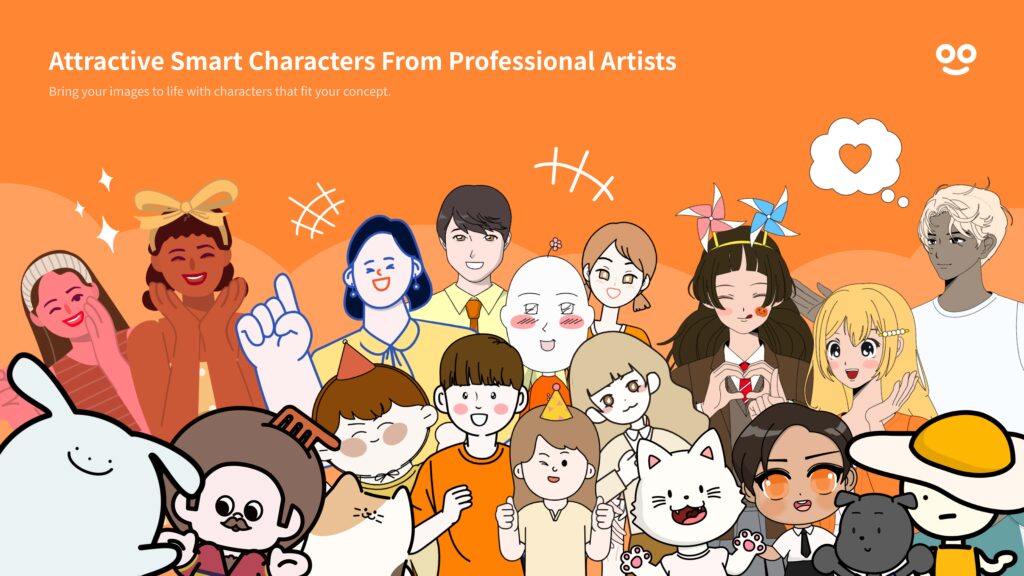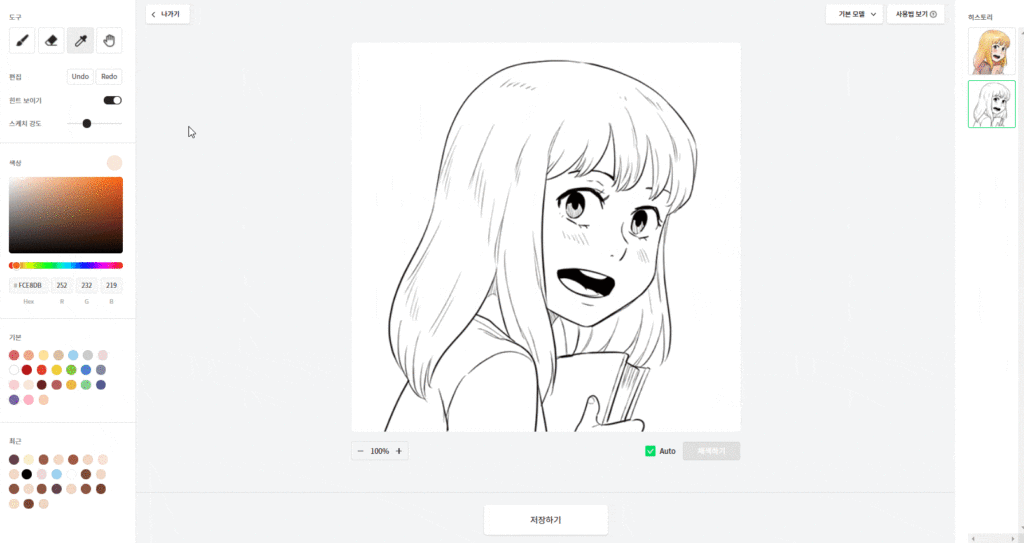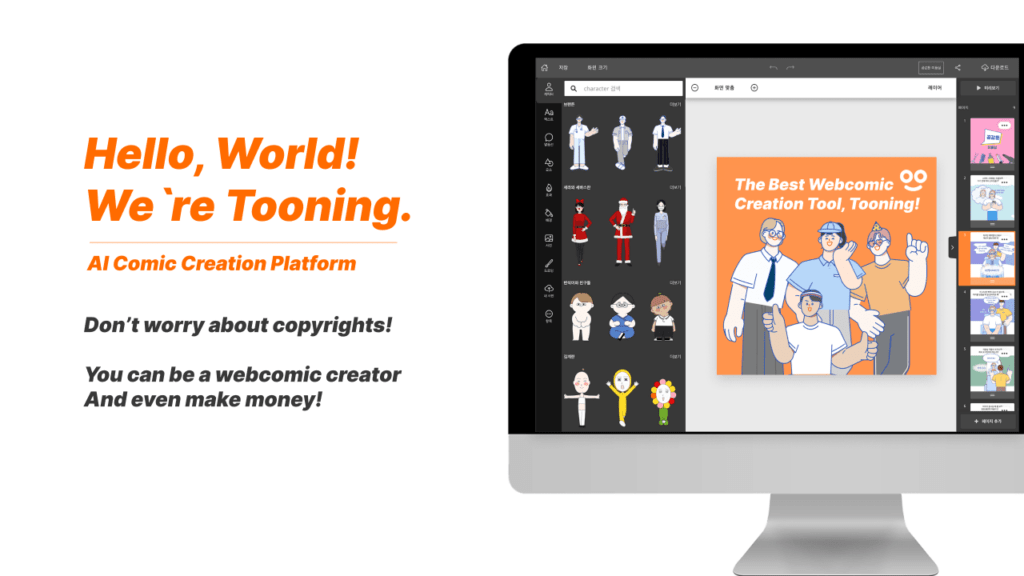If you’re an enthusiastic comic book reader, you might have seen online cartoons dubbed “Webtoon.” Webtoon is a type of comic you can read on online platforms like WEBTOON. It originated in South Korea and is spreading worldwide thanks to its growing popularity.
In 2020, the Korea Creative Content Agency reported that the sales of Webtoon were over 1.05 trillion won ($810 billion) then, which was more than a 60 percent increase compared to the previous year.
Many dream of debuting as a Webtoon artist, a job that reportedly earns an average of 280 million won yearly. Over 140,000 users submitted their comics to the website “Webtoon Challenge” on Naver, the Korean web portal, where they can obtain an offer to debut as a professional Webtoon author if their works are proven to be good.

However, becoming a Webtoon author is often followed by overwhelming workloads; authors often have to write their story, sketch characters and backgrounds, do line works, colour, and then add special effects all by themselves to publish weekly comics. Some artists choose to work with assistants or partners to reduce the amount of work they do, but despite others’ help, the production of Webtoon costs too much labour-power.
An artist who uploads her cartoons every week on one of the biggest Webtoon platforms in South Korea told 4i Magazine that she had to take a three-month-long break after she completed the first season of her cartoon series.
“Every part of my body was sore after I finished the first season,” the artist said, who wanted to interview anonymously. “My cartoon series was based on popular fiction, so I didn’t have to write the story. Nevertheless, the workload was too much for a single artist.
I sometimes had to work full 24 hours without a break, nights and days mixed up.”
Tech giants and start-ups started to look for easy ways of producing Webtoon while meeting the expectations of the readers — high-quality, full-coloured comics uploaded every week. One of their solutions is building technical tools backed by artificial intelligence, called “story tech.”

Making Webtoons With AI Tools
Naver is at the forefront of developing story tech tools to reduce the workload of Webtoon authors. One tool they recently introduced to the market last October is the WEBTOON AI Painter. The tool can automatically fill colours into the linework of characters and backgrounds based on the given context inputted by users.
Users can select the colours and touch areas to fill. AI then identifies the area that needs to be painted and fills it with the selected colour. Naver says that the tool can help authors save time and energy in the Webtoon production, as authors can complete the painting work with a few clicks, rather than making numerous brushstrokes onto the blank areas. The artists can also save the painted files in Adobe Photoshop format, where they can add after-effects or computer graphic images.
Naver told 4i Magazine that WEBTOON AI Painter is based on technologies the company has researched and developed while operating Naver Webtoon, the biggest Webtoon platform in the country. The data fed into the AI tool is from 1,500 Webtoon series uploaded on the platform. The tool learned various characteristics of coloured areas in characters’ faces, bodies and backgrounds, and colouring styles, using the database of 300,000 image files from those Webtoon series.
Many professional authors are already using this tool for their production, too. More than 600,000 Webtoon scenes have been coloured with this tool since the introduction of its beta service, Naver says.
Kakao Brain, a subsidiary of tech giant Kakao Corp., also presented the AI Webtoon tool “minDALL-E” on Github. This tool is a model that generates images from inputted text. Kakao Brain explains the tool understands and creates original images, unlike other tools that find relevant, similar images to the inputted commands. For example, if a user types in commands like “Draw a chair made with banana peels,” the AI understands the context of the commands and outputs the requested image.

Tooning: Anyone Can Become a Webtoon Artist
People who don’t have any talents in drawing or using computer graphic generation tools can also create Webtoons using AI-powered story tech tools.
Toonsquare, a start-up based in Seoul, South Korea, built Tooning, an easy-to-use online platform where users can make cartoons with pre-made characters, backgrounds, and other cartoon items like speech bubbles.
Leo Lee, founder, and CEO of Toonsquare, who also is an enthusiastic Webtoon reader, says that anyone can become a Webtoon artist with the help of Tooning, as long as they have a good story to develop.
“The tool allows people to transform their stories into well-made cartoons,” Lee told 4i Magazine. “Not only aspiring Webtoon authors, but also marketers and advertisers can make promotional posts or infographics, utilising various resources available on our platform.”
As for in-cartoon characters, users can change their facial looks based on their stories in mind. Preset cartoon items are all Toonsquare’s original productions so that the users can use them without concerns of copyright violations.
Tooning’s AI can automatically generate scenes from the inputted text. Users can transform or add items and change layers in the scenes with just a few clicks. They also can make their characters based on given images, like photos of themselves.
Lee explains that developing an AI tool like Tooning was not easy for a start-up. The company started with a team of three, and it took almost two years to build the platform. Some of the challenges the company faced then were developing the operating AI, building an online platform that provides multiple Webtoon production functions, and securing original intellectual property.
“None of those challenges was easy for a start-up,” Lee said. “But all of them were very important to provide a good service to our users.”
Their hard work soon gained the attention of many. Lee says that the platform now has 200,000 registered users, with 60,000 users under monthly subscriptions, and users from various backgrounds and expertise are sending in great reviews.
The company recently received positive feedback from a school teacher who teaches history. “The teacher said they could create educational cartoons about history with provided characters, adding that our platform is useful and convenient,” Lee said. “We’re grateful to hear such positive feedback from our users.”
Compared to other story tech tools available online, Tooning users don’t need to download software to use it. Tooning is a subscription-based platform with a monthly fee of 12,000 won.

Story tech tools can improve the efficiency of Webtoon productions, as the tools mentioned above would. One’s working hours can go down immensely if one knows how to utilise these tools.
Lee also thinks that artists can achieve goals that seemed impossible with the assistance of story tech tools. He says that Chon Kye-young, a well-known manhwa author in the country, draws her cartoons through vocal commands since she can’t use her hands due to degenerative arthritis.
“The technology can enter a certain domain like Webtoon and revolutionise that domain. That’s what the technology does,” Lee said.

